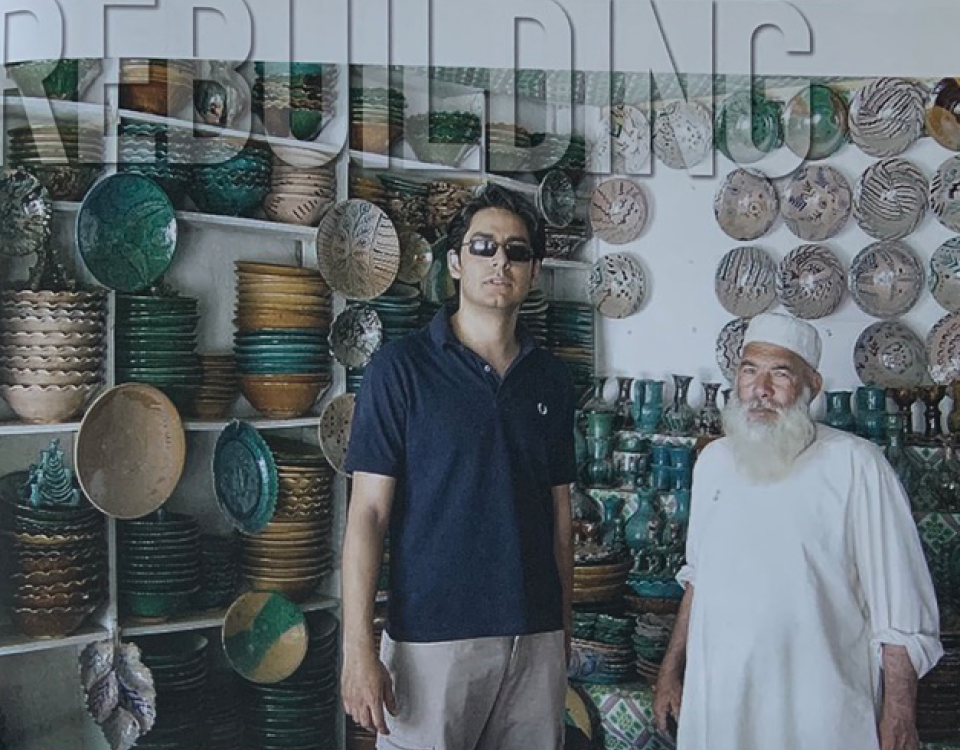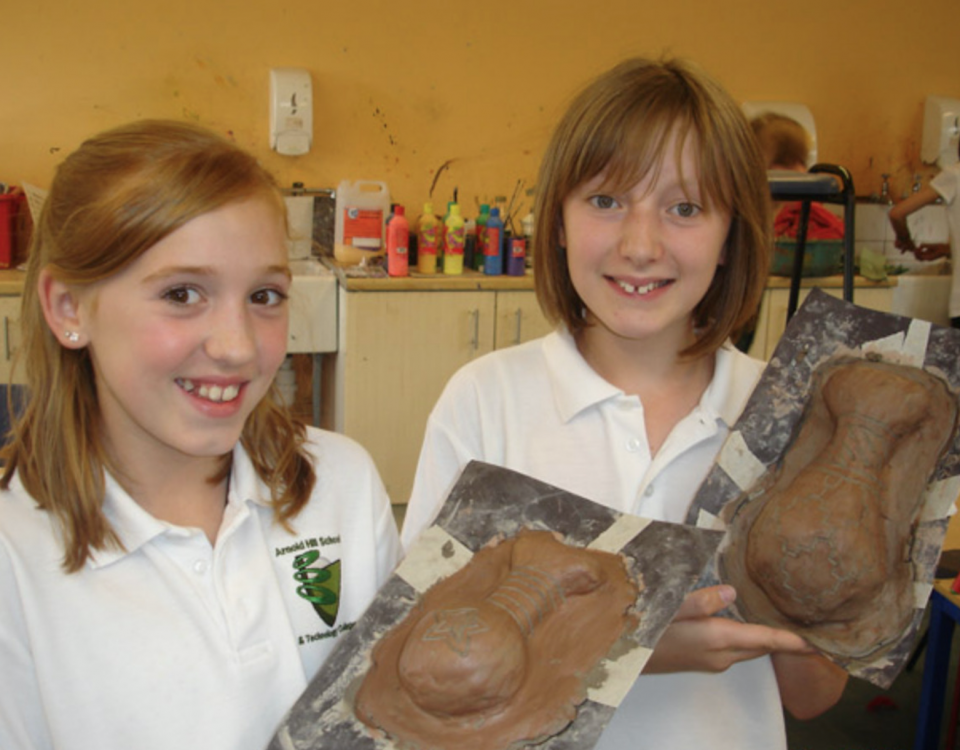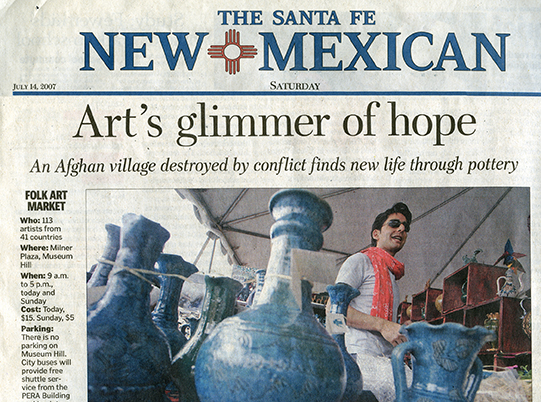A Pictorial Guide to Istalif Pottery
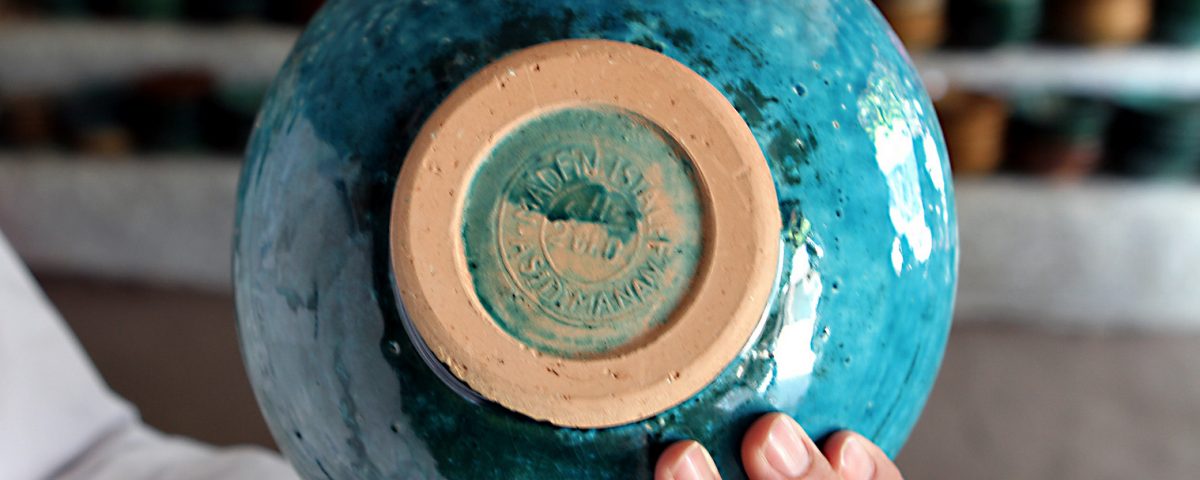
A Pictorial Guide to Istalif Pottery
By Ali Istalifi
Istalif is a picturesque village of craftsmen and is located about 33 miles North of Kabul, Afghanistan. Besides the production of jewelry, sheep skin jackets, rugs and wood work, pottery is one of their main crafts.
Istalif potteries are very charming and have a striking ornamental beauty to them. Their beautiful shapes and vibrant colours are immensely attractive. Each piece is unique and as they are handmade folk art with great skill and tradition behind their production every item can boast individuality. They have a strong decorative quality to them for the Western market.
HISTORY
 Pottery production has existed in Istalif for centuries.
Pottery production has existed in Istalif for centuries.
Preliminary research had suggested that the first potters had come from Samarkand centuries ago and this art has continued until the present day. However, new research is challenging this notion and suggests that this craft has an even longer history than the Samarkand potteries.
Researchers are beginning to accept the belief that Istalif pottery tradition could be thousands of years old. Istalif itself is an ancient village and its name comes from the Greek word Stafil which means grape. Istalif is famous for its grapevines and when the Greeks had crossed Afghanistan they called this picturesque village Stafil. Evidence show that even during the Alexander the Great period the pottery productions existed in Istalif.
It is an ancient folk art that has managed to continue to the present day and the skills passed down from one generation to another.
THE METHOD OF PRODUCTION
Istalif pottery is made in a very classical style and their method of production has been more or less the same for centuries. Historically this folk art has remained a family endeavor and the workshops have always been in the homes of the potters.
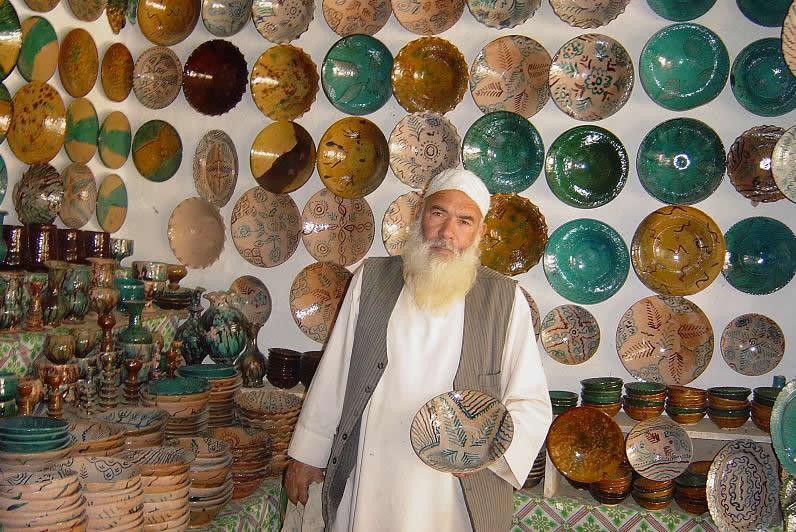
Each piece is made with the collective efforts from all the members of the family. The work in the different stages of the production is distributed among all the capable members of the family.
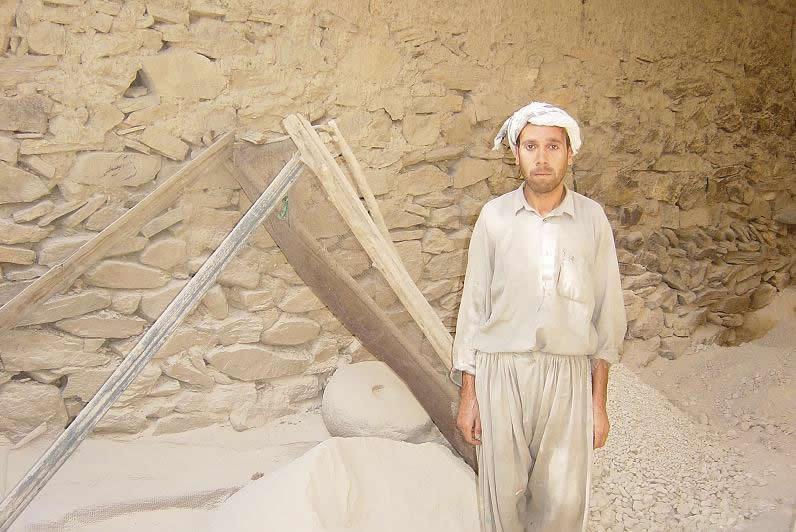
Clay is collected from the village and transported to their homes by trucks or on donkeys’ back.
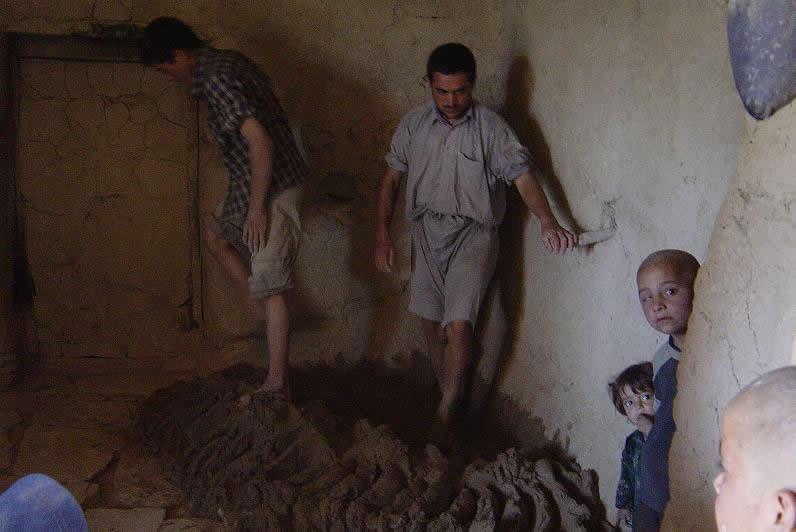
They do not use any modern technology to prepare the clay; rather the men sieve, damp and soften it with their feet. During this process they add fiber plants in it which helps the process of turning the clay.
When the clay is ready the master potter of the family is ready to start work. With the help of his apprentice he makes wonderful shapes on the wheel. The design of the wheel echoes a very traditional one where it is still spun by hand. The master potter is often the father or the older brother and as the head of the team he is considered by the other artists of the family as their mentor. He understands the whole process of the production and while his work is less than the others he has a much greater responsibility. He sits behind the hand-wheel and turns the clay to make wonderful shapes.
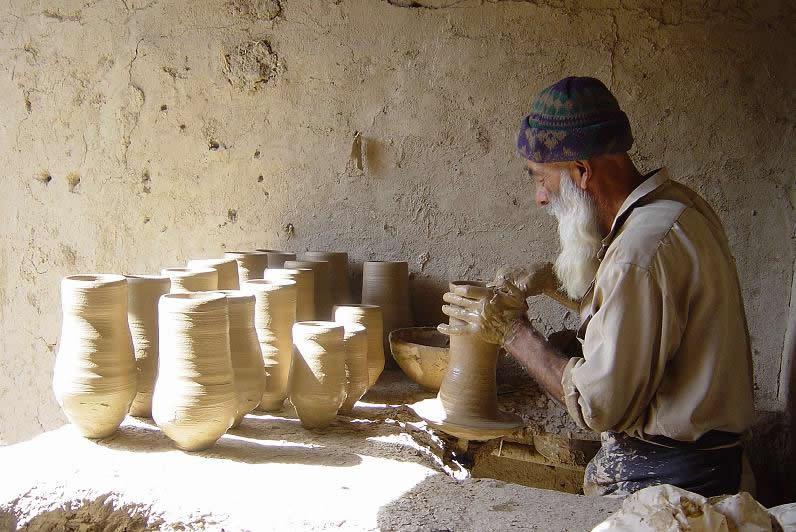
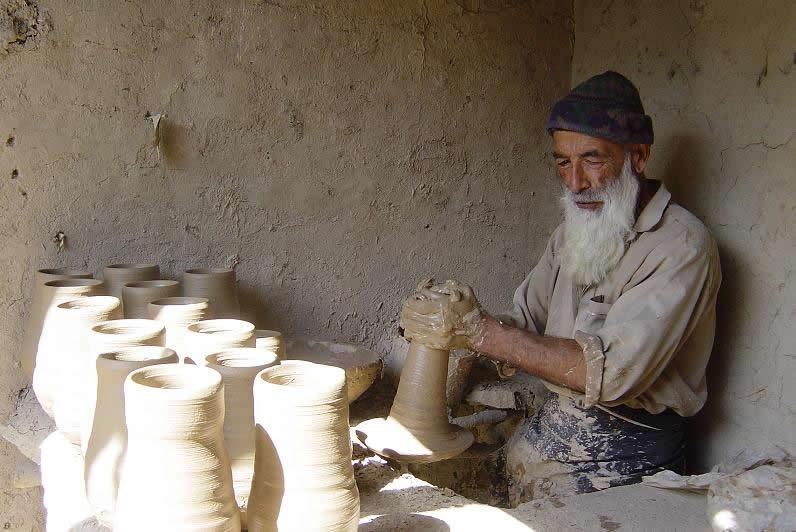
The design and the shape of the pottery being the heart of this folk art requires the potter to become a master of his art before he is given the status of mentor.
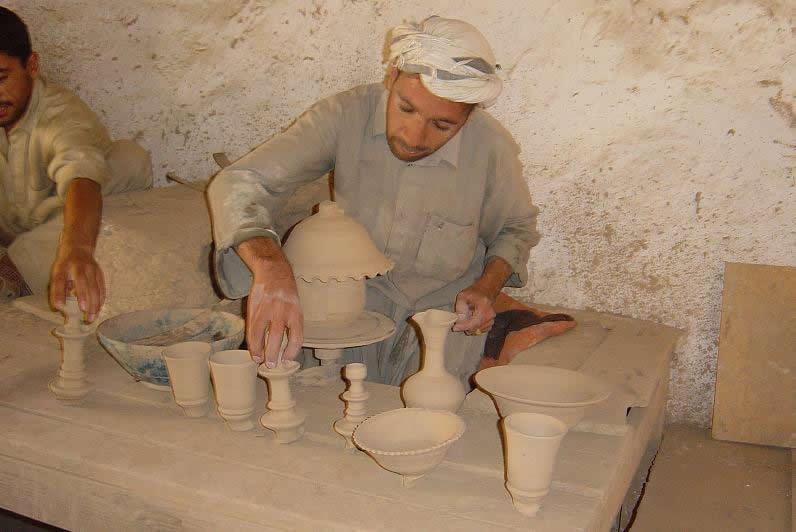
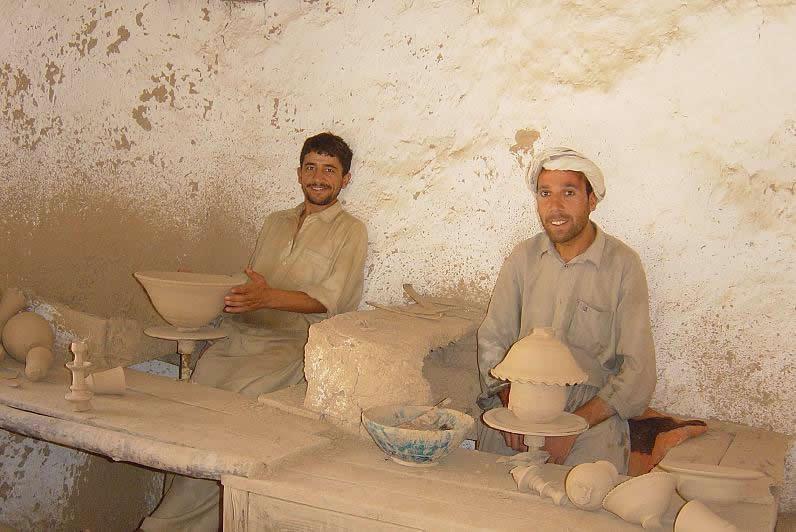
The master potter has an apprentice who is often his oldest son or brother. The apprentice is at the learning stage of becoming the next master potter and his work is quite heavy.
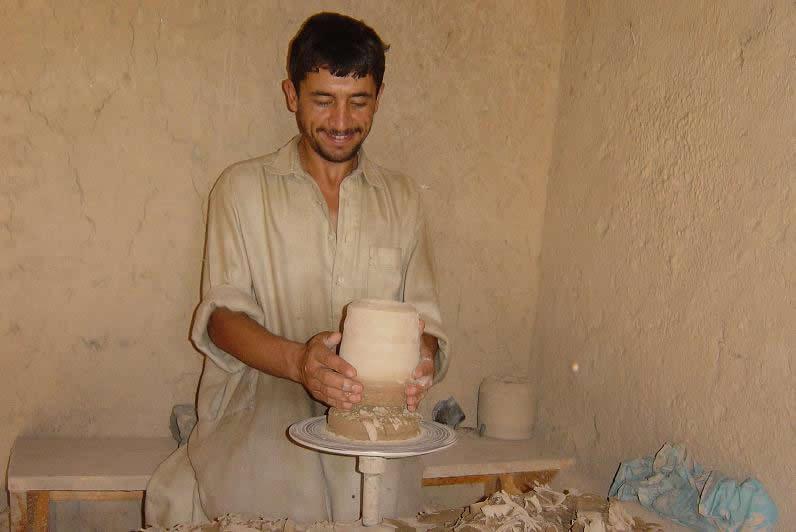
Often the mentor would sit back and let him turn the clay so he can improve his skills. The design of the wheel echoes a very traditional one where it is still spun by hand.
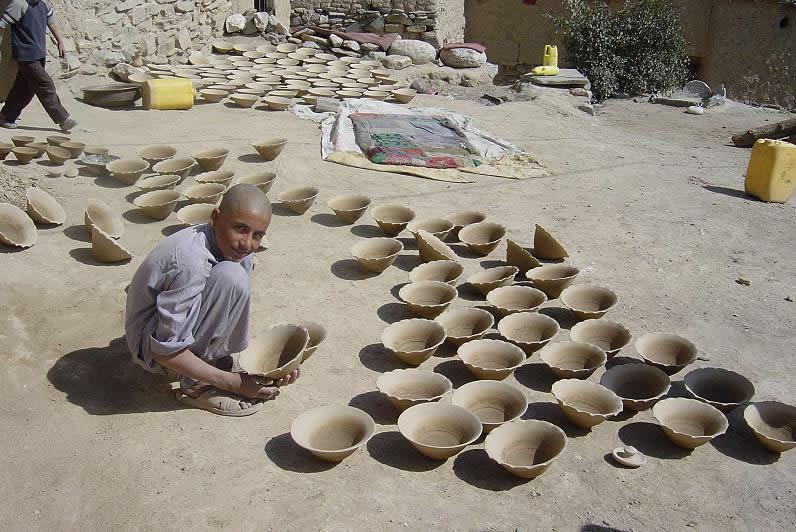
Once the shape of the pottery is produced they are all set outside under the sun and left to dry. Before it is completely dry the women carve patterns on them and once this decoration stage is completed they are left to fully dry.
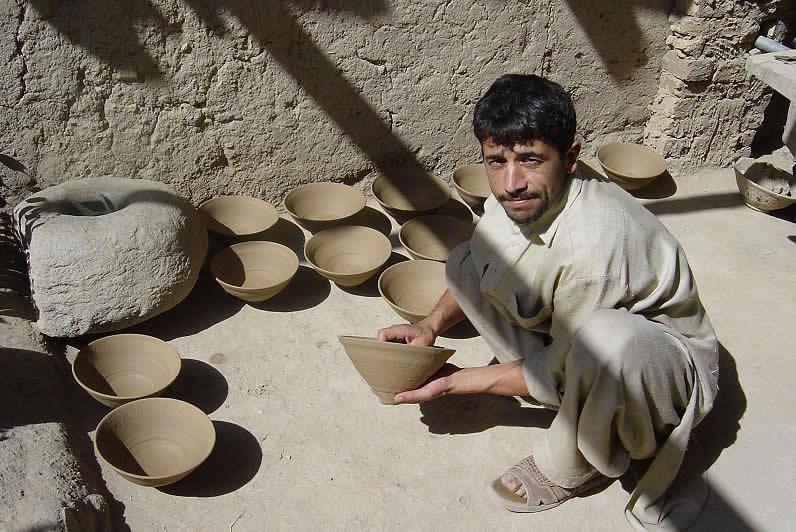
The apprentice inspects each piece one by one. If he finds a piece with rough edges he sends it back to the work shop.
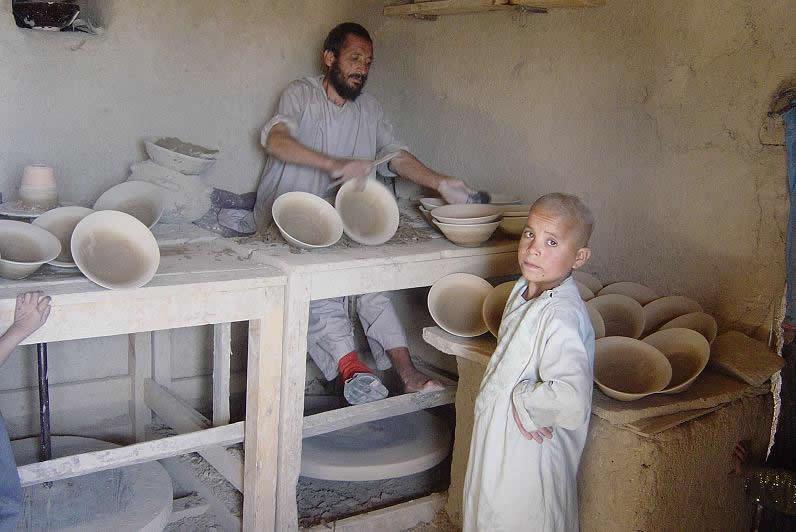
The master potter works hard to smooth the rough edges of the pottery so it would be ready for the glazing stage.
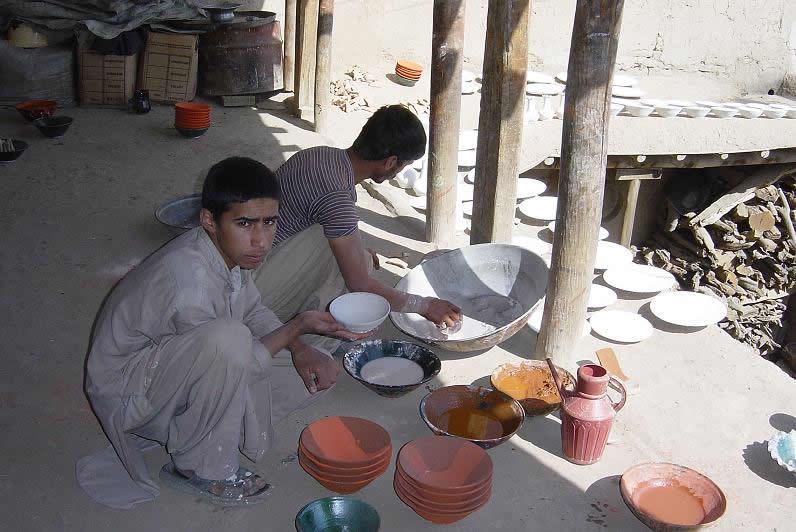
Some of the glazes are imported from the big cities and others are produced from the materials available in the village. The potters purchase the glaze from the local market. Both the women and the men prepare the glaze in a liquid format.
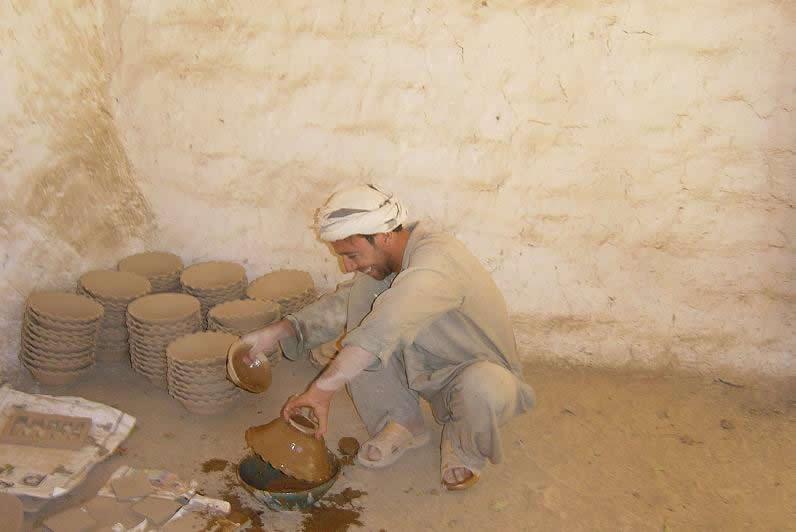
The apprentice then applies the glaze by hand one by one on each piece.
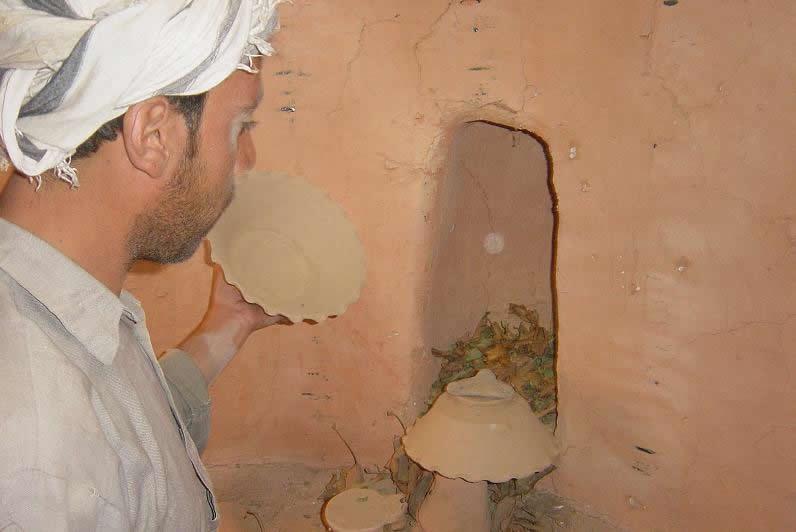
Without wasting time he then carefully arrange each pottery one on top of another inside the kiln separated by a clay tripod.
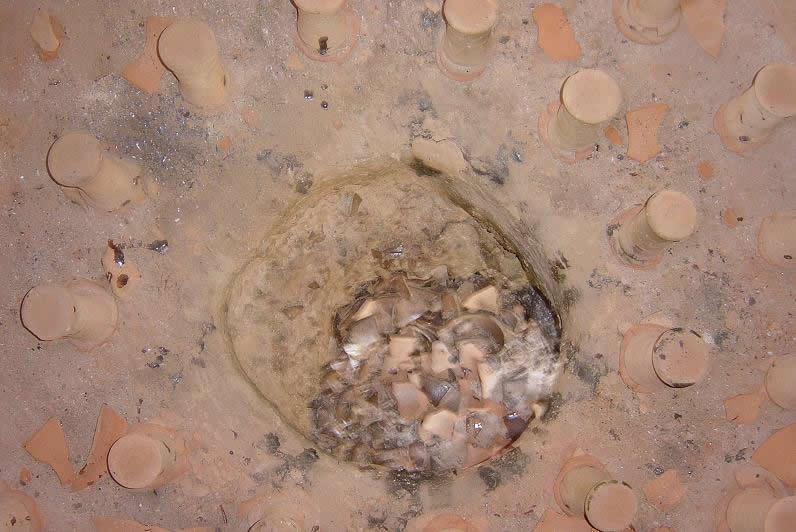
They use a very traditional wood burning kiln.
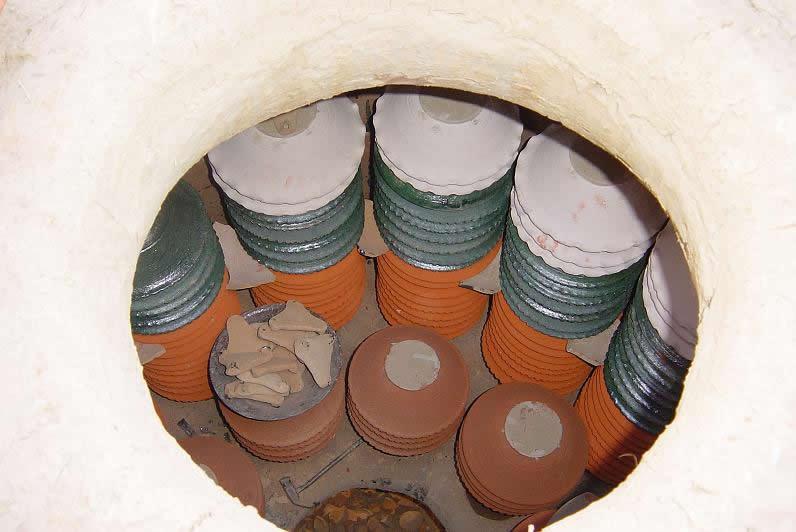
The arrangement of the pottery in the kiln is a very important process. If not done right then there is a chance that the whole lot could topple.
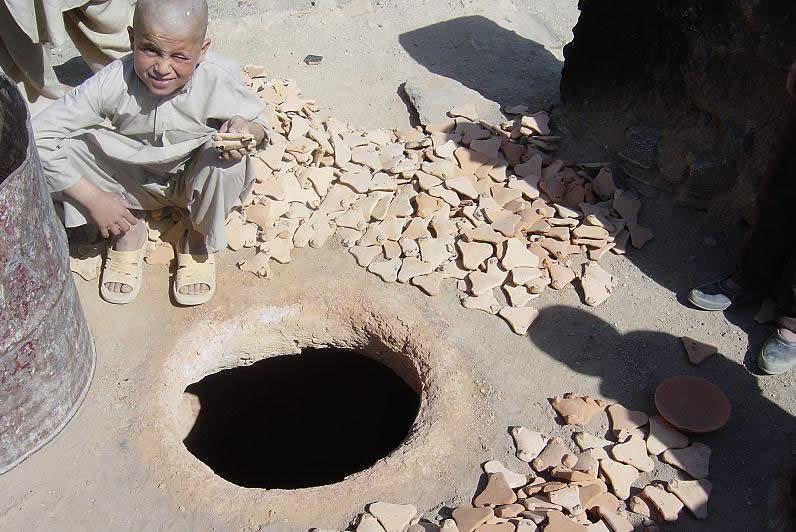
When all the pieces are arranged the kiln is fired for few hours until the glaze turns red and that is when they put it out and let it cool down.
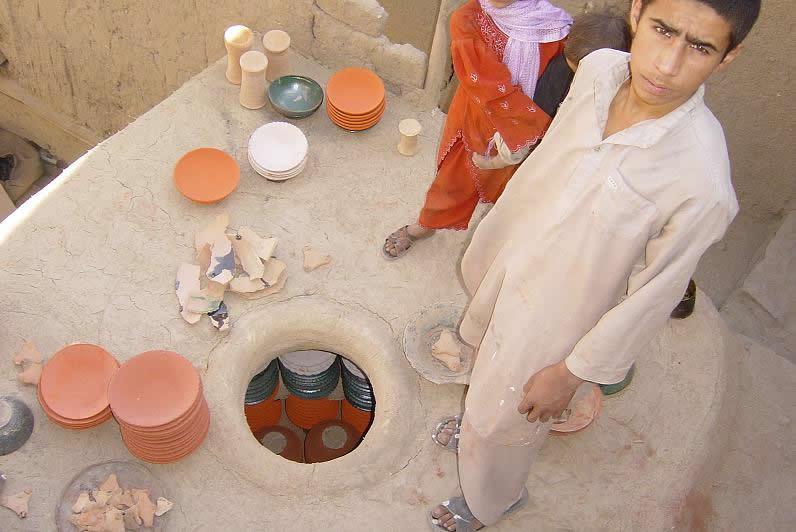
Once the pottery is cooled they are removed from the kiln and watered so they harden. At times the glaze does not reach certain areas such as the part where the clay tripods are placed so they inspect all the pieces one by one and touch up those areas with dyes. When this is done the pottery is ready.
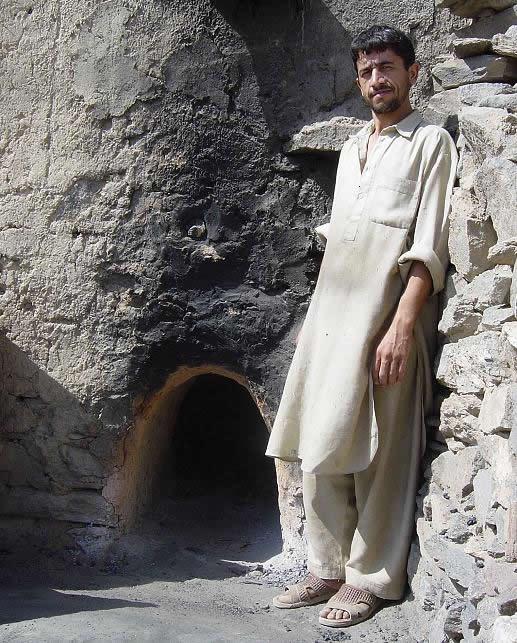
SOME OF THE SAMPLES OF THE BEAUTIFUL POTTERY
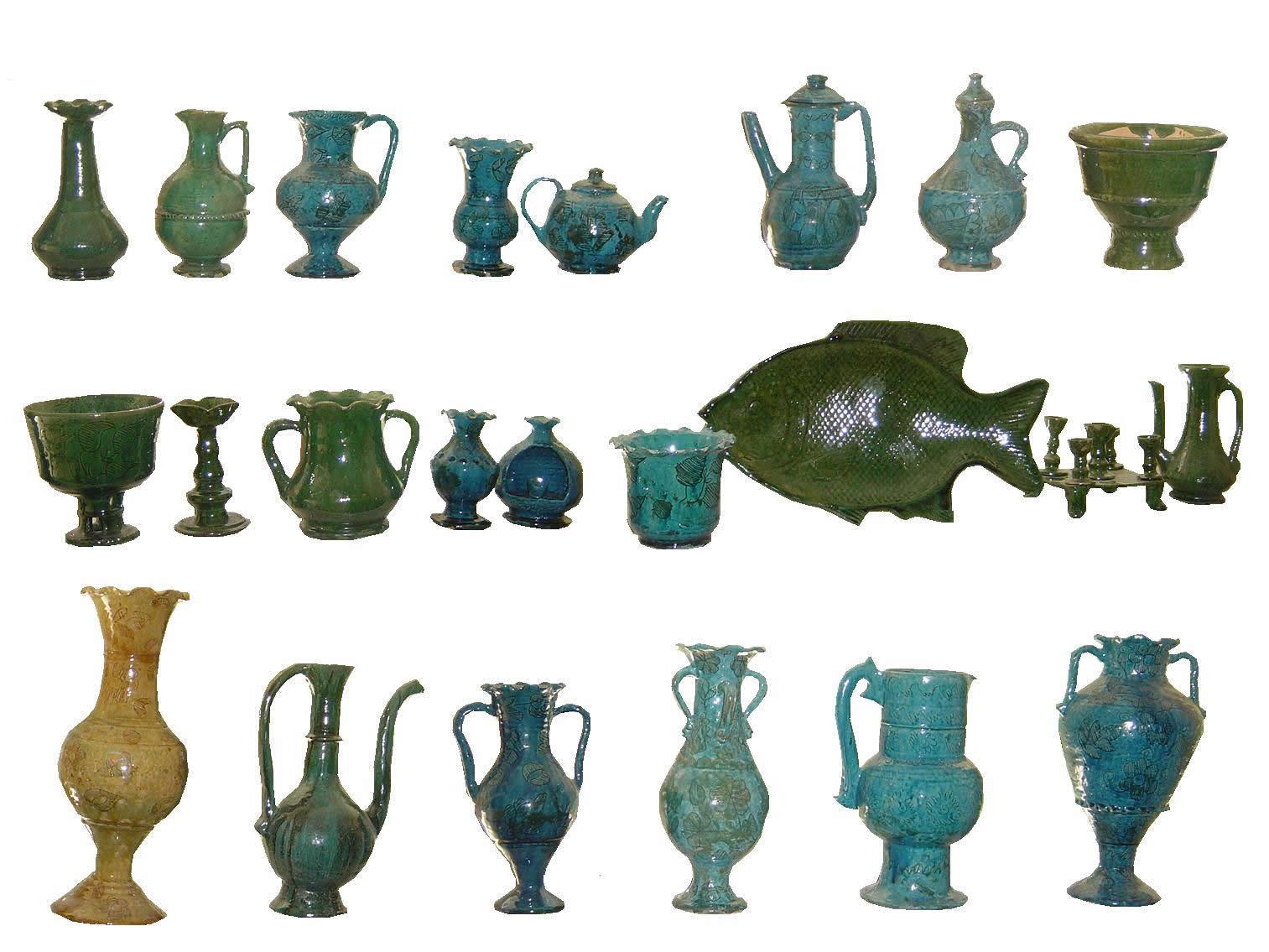
Large vases, flower pots, ewers, various styles of candle stick holders, fish design plates, little animal figures are just some of the wonderful shapes that reflect the high skills of the master potters of Istalif. The elegance of these beautiful shaped potteries is elaborated by the dazzling glaze which includes a rich turquoise colour and a striking green.
Their beauty has also made them immensely popular throughout the whole of Afghanistan. People from all over the country buy these potteries either as decorations or for practical uses in their every day lives. People value their Istalif pottery more than their other dishes. Being hand made they are used as decorative show pieces.
When the pottery is finished, they are transported on donkeys’ back from the village’s to the local market.
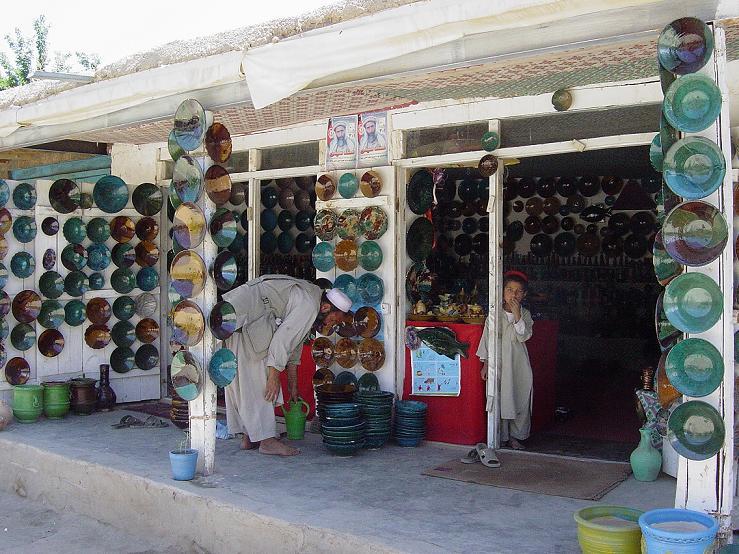
Some potters have their own shops and some sell their folk art to the local merchants.
The pottery is put on display in almost all of the shops in the bazaar. Their dazzling glazes give the ancient market a wonderful sparkle.
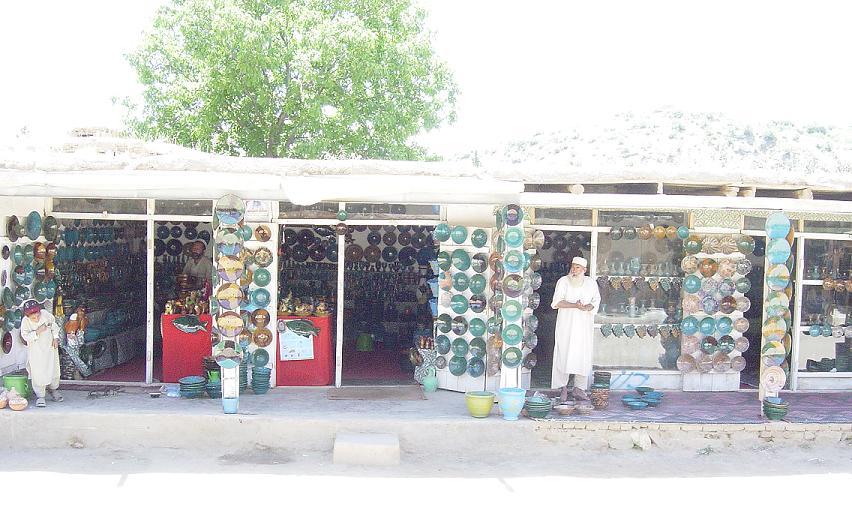
The shopkeepers proudly wait for customers to come and buy them.
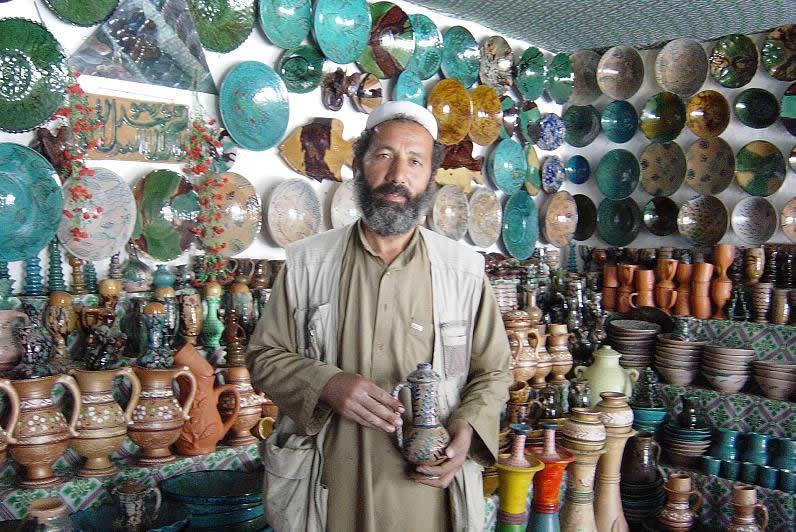
Abdul Wakheel stands in his shop surrounded by the beautiful turquoise pottery Istalif is famous for.
To the people of Istalif pottery represents their long history and it is an integral part of their local identity which has managed to survive for generations. The whole of the village takes pride in this fact.
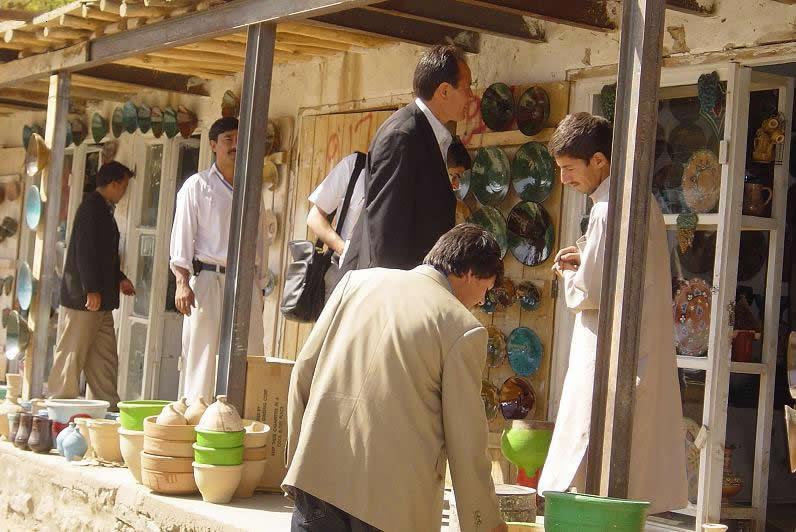
While Istalif is a scenic village with wonderful views and gardens that grow hundreds of variety of fruits they are also famous for their crafts which included jewelry, sheep-skin jackets, rugs and wood work. But the beauty of their pottery has always been what the village has been famous for. This is to an extent that when visitors come to Istalif for picnic breaks to the lovely river side gardens they make sure they visit the market to buy a pottery not just as a souvenir but rather as a piece of folk art they can take back and enjoy.
Every Friday many visit Istalif for a day break and walk down the strip of the local market to buy a pottery.
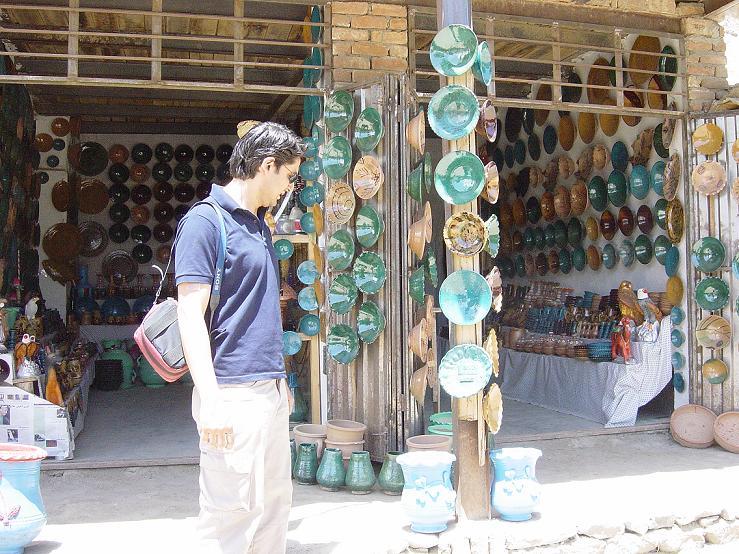
The colours of the glazes and the beautiful shapes have an enchanting element to visitors.
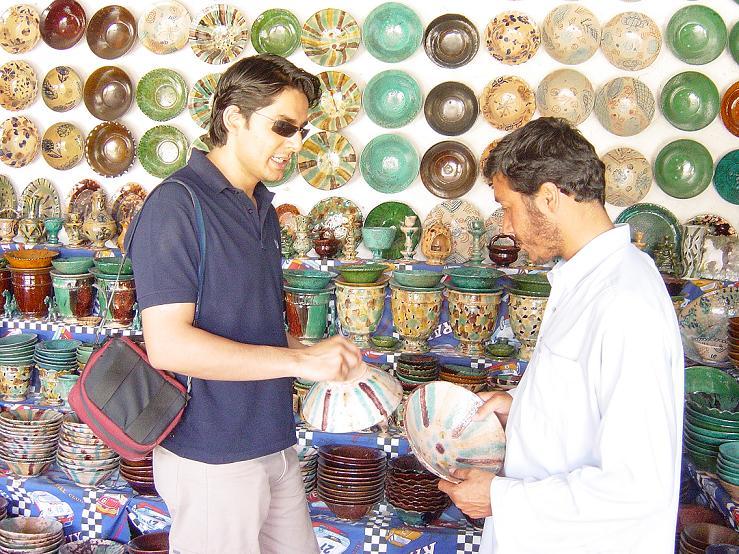
The potters proudly explain to the customers about their art and help them select and buy pieces always with great hospitality and over a cup of green tea or the famous grapes of the village.

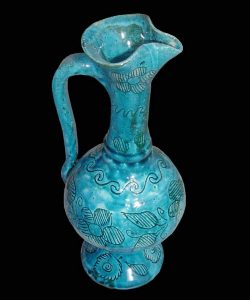 Pottery production has existed in Istalif for centuries.
Pottery production has existed in Istalif for centuries.